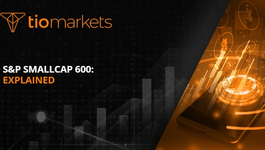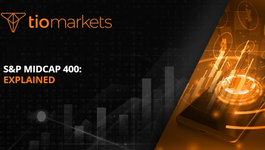Helicopter money: Explained
BY TIOmarkets
|July 27, 2024Helicopter money is a term that has been increasingly used in the world of finance and economics. It refers to an unconventional monetary policy tool designed to stimulate economies during severe recessions or deflationary periods. The concept is named after a thought experiment by famous economist Milton Friedman, who imagined a helicopter dropping money from the sky. This article will delve into the intricacies of helicopter money, its implications, and its relevance to the trading world.
Understanding helicopter money is crucial for traders as it can have significant impacts on the financial markets. When implemented, it can lead to changes in interest rates, inflation, and exchange rates, all of which can affect the value of different financial instruments. This article will provide a comprehensive explanation of helicopter money, its potential effects on the economy, and how traders can navigate these changes.
Concept of Helicopter Money
The concept of helicopter money was first introduced by Milton Friedman in 1969 as a theoretical exercise. He proposed a situation where a helicopter flies over a town and drops money from the sky. The residents, upon finding the money, would likely spend it, leading to an increase in demand for goods and services, thereby stimulating the economy.
While this scenario is purely hypothetical, it serves as a metaphor for a type of monetary policy where the central bank directly finances government spending or provides money directly to citizens to stimulate economic activity. The aim is to increase spending and investment to boost the economy during periods of recession or deflation.
Monetary Policy and Helicopter Money
Monetary policy refers to the actions taken by a central bank to control the supply of money in an economy. This can include changing interest rates, buying or selling government bonds, and adjusting reserve requirements for banks. Helicopter money is considered an unconventional form of monetary policy because it involves creating new money and distributing it directly to the public or government.
Unlike conventional monetary policy tools, which work indirectly by influencing the financial conditions faced by banks and other financial institutions, helicopter money works directly by increasing the amount of money in circulation. This can lead to a more immediate and significant impact on spending and investment.
Implementation of Helicopter Money
The implementation of helicopter money involves the central bank creating new money and distributing it directly to the public or government. This can be done in several ways. For example, the central bank could make direct payments to citizens, known as a 'citizen's dividend'. Alternatively, it could finance government spending on public works projects, leading to an increase in employment and income.
However, the implementation of helicopter money is not without challenges. It requires careful coordination between the central bank and the government, and there are potential risks of inflation and currency depreciation. Furthermore, once implemented, it can be difficult to reverse, making it a policy tool that is typically considered only in extreme circumstances.
Implications of Helicopter Money
The implications of helicopter money are wide-ranging and can have significant impacts on an economy. By increasing the amount of money in circulation, it can stimulate spending and investment, leading to economic growth. However, it can also lead to inflation, where the general level of prices for goods and services rises.
For traders, the implications of helicopter money can be significant. It can lead to changes in interest rates, inflation, and exchange rates, all of which can affect the value of different financial instruments. For example, if helicopter money leads to higher inflation, this could reduce the value of fixed-income investments, such as bonds. On the other hand, it could increase the value of assets that are seen as a hedge against inflation, such as gold.
Impact on Interest Rates
Helicopter money can have a significant impact on interest rates. By increasing the amount of money in circulation, it can lead to lower interest rates. This is because when there is more money in the economy, the cost of borrowing decreases. Lower interest rates can stimulate spending and investment, but they can also reduce the returns on savings and fixed-income investments.
For traders, changes in interest rates can have significant implications. For example, lower interest rates can reduce the returns on fixed-income investments, such as bonds. However, they can also stimulate economic growth, which can boost the stock market. Therefore, understanding the potential impact of helicopter money on interest rates is crucial for traders.
Impact on Inflation
One of the main risks associated with helicopter money is inflation. By increasing the amount of money in circulation, helicopter money can lead to higher prices for goods and services. While a moderate level of inflation can be beneficial for an economy, high inflation can erode purchasing power and lead to economic instability.
For traders, inflation can have significant implications. High inflation can reduce the value of fixed-income investments, such as bonds, as it erodes the purchasing power of the fixed interest payments. However, it can also increase the value of assets that are seen as a hedge against inflation, such as gold. Therefore, understanding the potential impact of helicopter money on inflation is crucial for traders.
Helicopter Money in Practice
While the concept of helicopter money has been around for decades, it has rarely been implemented in practice. This is largely due to the potential risks and challenges associated with it, including the risk of inflation and currency depreciation. However, there have been instances where policies similar to helicopter money have been implemented.
For example, during the global financial crisis of 2008, the US government implemented a policy known as 'quantitative easing', which involved the central bank creating new money to buy government bonds. While this is not exactly the same as helicopter money, as the money was not directly given to the public or government, it has similar effects in terms of increasing the money supply and stimulating economic activity.
Quantitative Easing vs Helicopter Money
Quantitative easing (QE) and helicopter money are both unconventional monetary policy tools that involve the central bank creating new money. However, there are key differences between the two. In QE, the central bank buys government bonds or other financial assets to lower interest rates and stimulate economic activity. The money is not directly given to the public or government.
In contrast, helicopter money involves the central bank creating new money and giving it directly to the public or government. This can lead to a more immediate and significant impact on spending and investment. However, it also carries greater risks, including the risk of inflation and currency depreciation.
Examples of Helicopter Money
While helicopter money is rarely implemented in its pure form, there have been instances where policies similar to helicopter money have been implemented. For example, during the COVID-19 pandemic, many governments provided direct cash payments to citizens to stimulate spending and mitigate the economic impact of the pandemic. This is similar to the concept of a 'citizen's dividend' in helicopter money.
Another example is the 'Abenomics' policy in Japan, which involved the central bank financing government spending on public works projects. While not exactly the same as helicopter money, as the money was not directly given to the public, it has similar effects in terms of increasing the money supply and stimulating economic activity.
Trading Strategies in a Helicopter Money Environment
For traders, understanding the implications of helicopter money is crucial for developing effective trading strategies. If helicopter money is implemented, it can lead to changes in interest rates, inflation, and exchange rates, all of which can affect the value of different financial instruments.
For example, if helicopter money leads to higher inflation, this could reduce the value of fixed-income investments, such as bonds. On the other hand, it could increase the value of assets that are seen as a hedge against inflation, such as gold. Therefore, traders may need to adjust their portfolios accordingly.
Fixed-Income Trading
In a helicopter money environment, fixed-income traders may need to adjust their strategies. If helicopter money leads to higher inflation, this could reduce the value of fixed-income investments, as it erodes the purchasing power of the fixed interest payments. Therefore, traders may need to consider investing in inflation-protected securities, which provide a return that is adjusted for inflation.
Additionally, if helicopter money leads to lower interest rates, this could reduce the returns on fixed-income investments. Therefore, traders may need to consider investing in higher-yielding assets to compensate for the lower returns.
Equity Trading
For equity traders, a helicopter money environment can present both opportunities and challenges. On one hand, helicopter money can stimulate economic growth, which can boost corporate profits and the stock market. On the other hand, it can lead to inflation, which can erode purchasing power and potentially lead to higher interest rates in the future.
Therefore, equity traders may need to consider investing in companies that can benefit from economic growth, such as those in the consumer discretionary sector. They may also need to consider investing in companies that can pass on higher costs to consumers, such as those with strong pricing power.
Conclusion
Helicopter money is an unconventional monetary policy tool that involves the central bank creating new money and distributing it directly to the public or government. While rarely implemented in practice, it has been increasingly discussed as a potential policy tool to stimulate economies during severe recessions or deflationary periods.
For traders, understanding the concept of helicopter money and its potential implications is crucial. It can lead to changes in interest rates, inflation, and exchange rates, all of which can affect the value of different financial instruments. By understanding these changes, traders can develop effective strategies to navigate a helicopter money environment.
Start Trading with TIOmarkets
Now that you're equipped with the knowledge of helicopter money and its potential impact on the markets, it's time to put that understanding into action. Join over 170,000 traders in more than 170 countries who have chosen TIOmarkets as their trusted forex broker. With our platform, you can trade over 300 instruments across 5 markets, including Forex, indices, stocks, commodities, and futures, all with low fees. Plus, enhance your trading skills with our comprehensive educational resources and step-by-step guides. Ready to take the next step? Create a Trading Account with TIOmarkets today and start navigating the financial markets with confidence.

Risk disclaimer: CFDs are complex instruments and come with a high risk of losing money rapidly due to leverage. You should consider whether you understand how CFDs work and whether you can afford to take the high risk of losing your money. Never deposit more than you are prepared to lose. Professional client’s losses can exceed their deposit. Please see our risk warning policy and seek independent professional advice if you do not fully understand. This information is not directed or intended for distribution to or use by residents of certain countries/jurisdictions including, but not limited to, USA & OFAC. The Company holds the right to alter the aforementioned list of countries at its own discretion.
Join us on social media

Behind every blog post lies the combined experience of the people working at TIOmarkets. We are a team of dedicated industry professionals and financial markets enthusiasts committed to providing you with trading education and financial markets commentary. Our goal is to help empower you with the knowledge you need to trade in the markets effectively.





